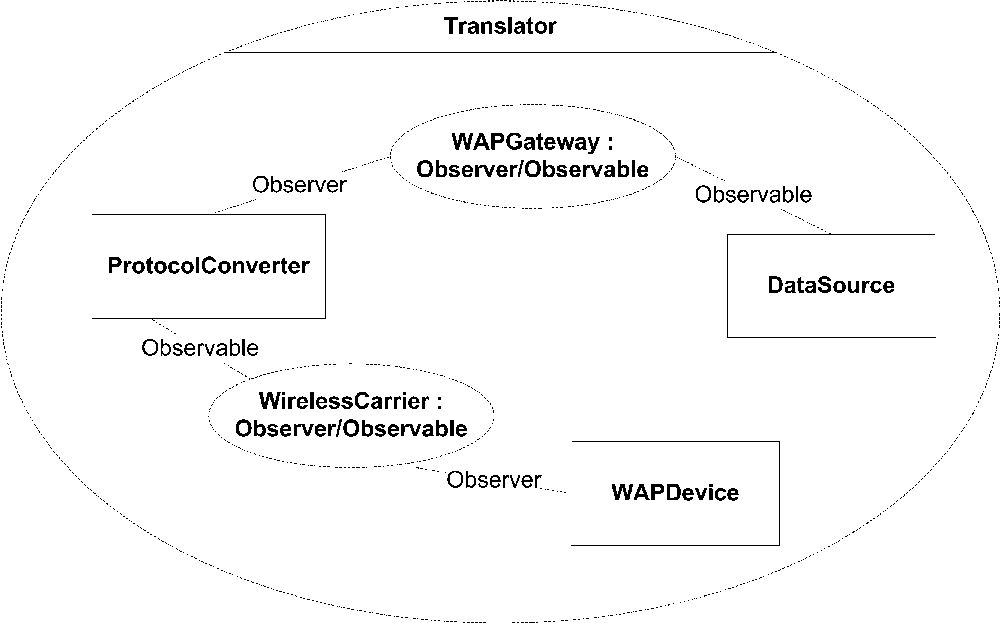UML 2.0 introduced a new concept to allow you to attach a collaboration to a specific operation or classifier to show how it is realized by other elements. When you associate a collaboration with an operation or classifier, you create a collaboration occurrence . You can think of collaboration occurrences as instances of collaborations. For example, you can use a collaboration occurrence to document how various classes make up a subsystem, what is responsible for persistence, what is really a façade to another subsystem, etc. The advantage of using a collaboration occurrence to document the implementation of functionality is that you can assign role names to internal elements of the classifier. There may be multiple occurrences of a particular collaboration within a classifier, each with different internal elements fulfilling the roles of the collaboration.
You show a collaboration occurrence using the same dashed ellipse used to show a collaboration, except that you list the name of the occurrence followed by a colon, and then the name of the collaboration type. For each role used in the original collaboration, you draw a dashed line from the collaboration occurrence to the element fulfilling the role. You label the dashed line with the name of the role. For example, a collaboration occurrence of our Observer/Observable collaboration is shown in Figure 4-18.
Get UML 2.0 in a Nutshell now with the O’Reilly learning platform.
O’Reilly members experience books, live events, courses curated by job role, and more from O’Reilly and nearly 200 top publishers.


